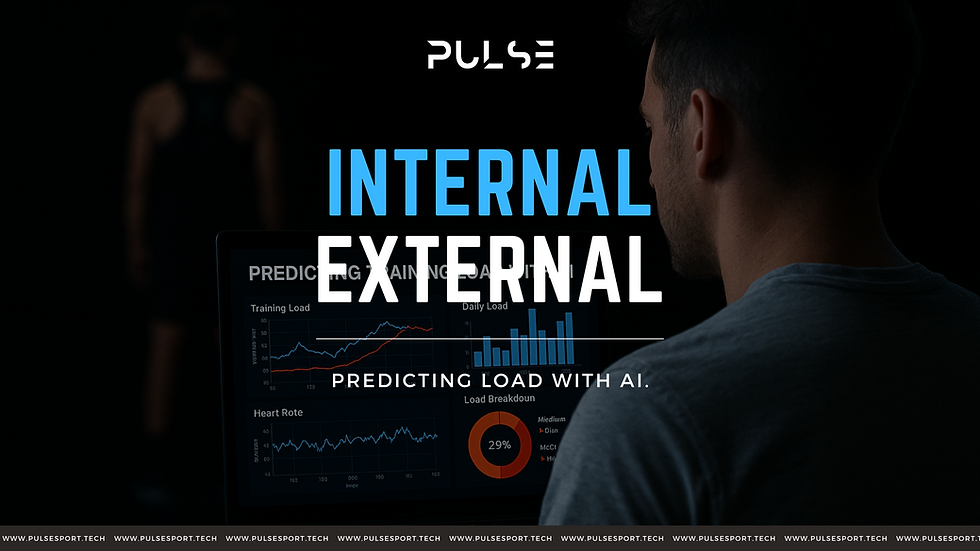The Role of Data Analytics in Preventing Injury in Sports
- ramseytognirt
- May 31, 2024
- 3 min read

In the era of big data, data analytics has emerged as a pivotal tool in various domains, including injury prevention. By leveraging advanced analytical techniques, we can transform raw data into actionable insights, thereby significantly reducing the risk of injuries in sports, workplaces, and daily activities.
Understanding Injury Patterns
One of the primary roles of data analytics in injury prevention is understanding patterns and trends. By analyzing historical injury data, we can identify common causes and high-risk factors. For instance, in sports, analytics can reveal the types of movements or activities that most frequently lead to injuries. This insight allows coaches and medical staff to develop targeted training programs that minimize risky actions (van Dijk, 2020).
Predictive Analytics
Predictive analytics is another crucial application. Using machine learning algorithms, we can predict the likelihood of injuries based on various factors such as an individual's physical condition, workload, and environmental conditions. For example, in workplace safety, predictive models can forecast potential accidents by analyzing data from sensors and employee health records. This enables proactive measures, such as adjusting workloads or implementing preventive maintenance, thereby reducing the incidence of injuries (Kumar et al., 2019).
Real-Time Monitoring and Intervention
Real-time data analytics has revolutionized injury prevention by enabling immediate intervention. Wearable technology and IoT devices collect continuous data on physiological parameters like heart rate, muscle activity, and motion. This data is analyzed in real-time to detect signs of fatigue or stress that could lead to injury. In sports, this means athletes can be pulled from training sessions before they reach a point of overexertion, thus preventing injuries before they occur (Li et al., 2021).
Customized Training and Rehabilitation Programs
Data analytics also facilitates the creation of customized training and rehabilitation programs. By analyzing individual performance data, trainers can design programs tailored to an athlete’s specific needs, strengths, and weaknesses. Similarly, for injury rehabilitation, data-driven approaches ensure that recovery protocols are optimized for each individual, enhancing recovery outcomes and reducing the likelihood of re-injury (Bittencourt et al., 2016).
Case Studies and Real-world Applications
Several case studies highlight the effectiveness of data analytics in injury prevention. For instance, Major League Baseball teams have used analytics to monitor pitchers’ biomechanics and workloads, resulting in a notable decrease in shoulder and elbow injuries (Conte et al., 2016). Similarly, construction companies are employing predictive analytics to enhance site safety, significantly lowering accident rates (Rosenfeld et al., 2020).
Conclusion
The integration of data analytics into injury prevention strategies offers a profound opportunity to enhance safety and well-being across various fields. By transforming data into actionable insights, predictive models, and personalized interventions, we can proactively mitigate risks and foster safer environments. As technology continues to evolve, the role of data analytics in injury prevention is poised to become even more critical, offering new ways to protect and preserve human health and performance.
References
Bittencourt, N. F. N., Meeuwisse, W. H., Mendonça, L. D., Nettel-Aguirre, A., Ocarino, J. M., & Fonseca, S. T. (2016). Complex systems approach for sports injuries: moving from risk factor identification to injury pattern recognition—narrative review and new concept. British Journal of Sports Medicine, 50(21), 1309-1314.
Conte, S., Camp, C. L., & Dines, J. S. (2016). Injury prevention in Major League Baseball: Can we better understand the “at-risk” player? Current Reviews in Musculoskeletal Medicine, 9(2), 121-126.
Kumar, A., Singh, R., & Jain, S. (2019). Predictive analytics: A tool for preventing workplace injuries. Journal of Safety Research, 70, 57-64.
Li, G., Buckley, D. A., & Henning, R. A. (2021). Real-time monitoring and interventions for occupational safety and health using wearable sensors: A systematic review. Journal of Occupational and Environmental Hygiene, 18(5), 249-264.
Rosenfeld, Y., Sacks, R., & Ziv, H. (2020). Implementing predictive analytics for accident prevention in construction. Journal of Construction Engineering and Management, 146(2), 04019085.
van Dijk, F. J. H. (2020). The role of data analytics in preventing injuries. International Journal of Environmental Research and Public Health, 17(21), 8123.



Very Interesting!!!